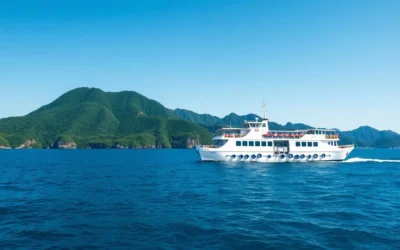✓ Accommodations✓ Flights✓ Rental Cars✓ Tours & Activities
Discover the spiritual and cultural heart of Japan in the Kansai Region, where ancient traditions meet modern attractions.
The region is home to UNESCO World Heritage temples, vibrant food scenes, and breathtaking natural beauty, making it a must-visit destination for travelers seeking an authentic Japanese experience.
From the ancient capitals of Kyoto and Nara to the cosmopolitan port city of Kobe, the Kansai Region offers a unique blend of traditional and contemporary Japan.
This comprehensive guide will help you navigate the region’s top attractions, from savoring street food in Dotonbori to hiking sacred mountain trails.
Discovering the Heart of Japan’s Cultural Capital
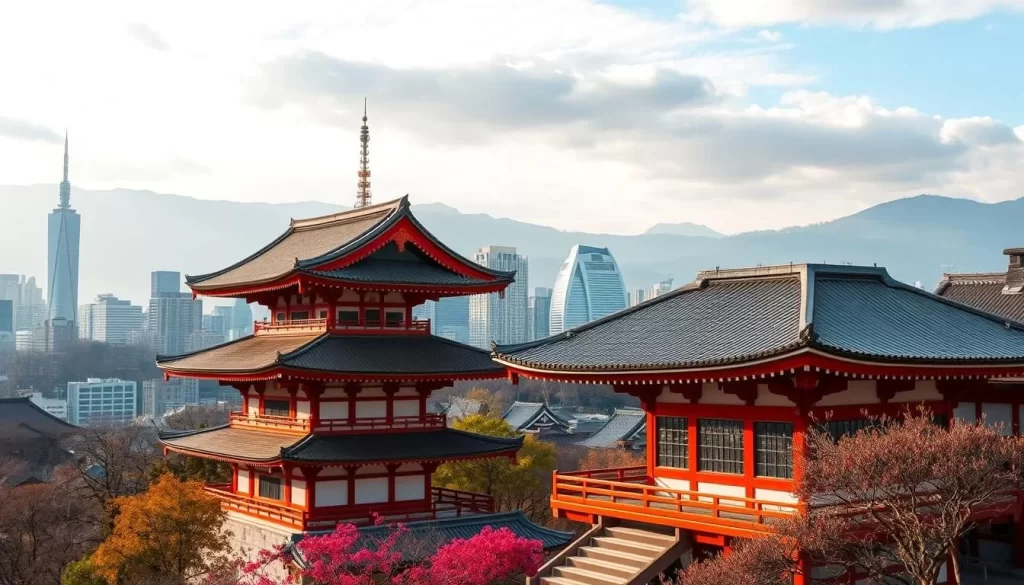
Kansai, a region that seamlessly blends the old with the new, is a must-visit destination for anyone interested in Japan’s cultural capital. This area is a world away from Tokyo, yet it remains filled with quiet towns and amazing scenery waiting to be explored.
The Kansai region serves as Japan’s cultural heartland, preserving the nation’s most treasured traditions, arts, and historical sites through time. Unlike the fast-paced energy of Tokyo, Kansai offers a more relaxed atmosphere, allowing you to immerse yourself in Japanese culture at a comfortable pace.
- The Kansai region encompasses seven prefectures (Mie, Shiga, Kyoto, Osaka, Hyogo, Nara, and Wakayama), each with its own distinct character and cultural treasures waiting to be discovered.
- This area was once home to Japan’s ancient capitals, and the historical significance is evident in the countless temples, shrines, and castles that dot the landscape.
- Your journey through Kansai will reveal the perfect harmony between traditional Japan and modern innovations – from lantern-lit temple pathways to neon-bright entertainment districts.
- As you explore the city life, you’ll find that Kansai offers a unique blend of traditional and modern attractions, making it an ideal destination for travelers.
With its rich cultural landscape and vibrant festivals, Kansai is an ideal destination for travelers seeking an authentic Japanese experience. Whether you’re exploring the historic temples or enjoying the modern entertainment districts, Kansai has something for everyone.
The Spiritual and Cultural Significance of Kansai
With its rich history and cultural significance, Kansai stands out as Japan’s spiritual and cultural capital. The region is home to numerous temples and shrines that are not only historical landmarks but also living centers of spiritual practice.
You can immerse yourself in a profound experience by visiting these sacred sites or participating in traditional rituals. Kansai’s cultural landscape, shaped by imperial influence and samurai traditions, continues to influence life in Japan today. In a city like Kyoto, ancient temples coexist with modern developments, creating a unique blend of old and new.
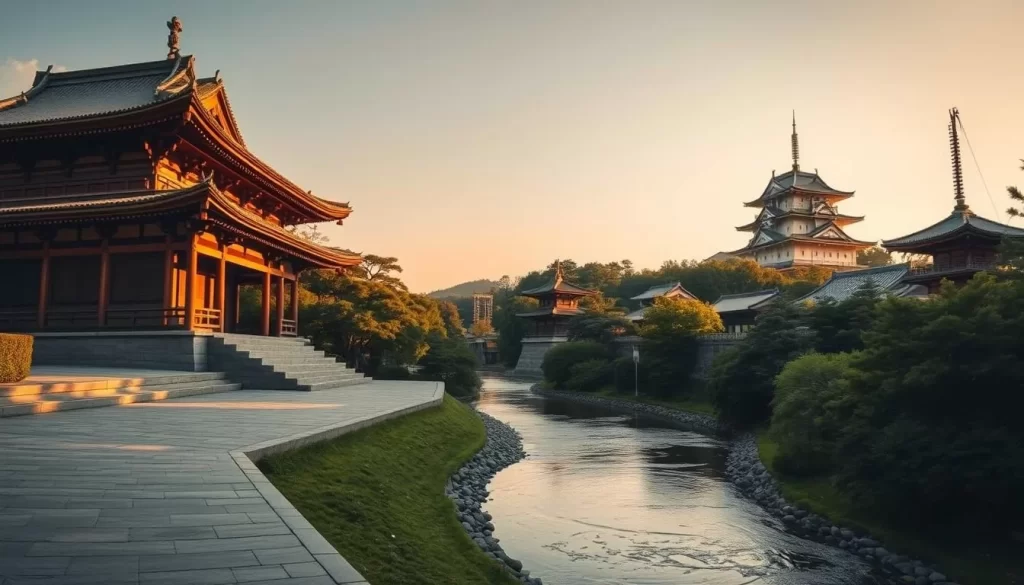
Kyoto: Where Ancient Japan Comes Alive
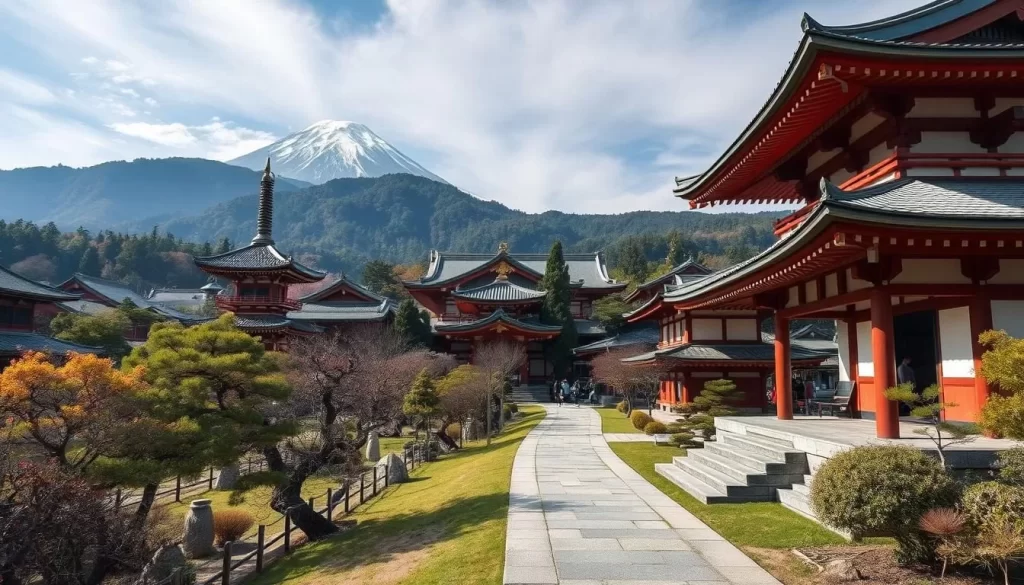
As you step into Kyoto, the former imperial capital of Japan, you’ll be surrounded by the essence of traditional Japanese culture. With over 1,600 Buddhist temples and 400 Shinto shrines, the city is a treasure trove of historical and cultural significance.
Must-Visit Temples and Shrines
Kyoto’s temples and shrines are breathtakingly beautiful and steeped in history. The Golden Pavilion (Kinkaku-ji) and Silver Pavilion (Ginkaku-ji) are must-visit sites, showcasing stunning Japanese architecture. Fushimi Inari Shrine’s thousands of vermilion torii gates create an iconic photo spot.
Gion District and Traditional Experiences
The Gion district is a place where you can step back in time and experience traditional Japan. Wander through preserved machiya townhouses and possibly glimpse geiko (Kyoto’s geisha) hurrying to evening appointments along atmospheric stone-paved streets.
Arashiyama Bamboo Forest and Monkey Park
A short trip from Kyoto, Arashiyama offers a surreal walking experience through its enchanting bamboo grove. The area is also home to a lovely river with traditional boat rides and a monkey park, making it a great day-trip destination.
During cherry blossom season, Kyoto transforms into a pink wonderland, with the Philosopher’s Path and Maruyama Park offering spectacular viewing spots. Whether you’re a tourist or a local, Kyoto’s beauty is sure to captivate you.
Osaka: The Kitchen of Japan
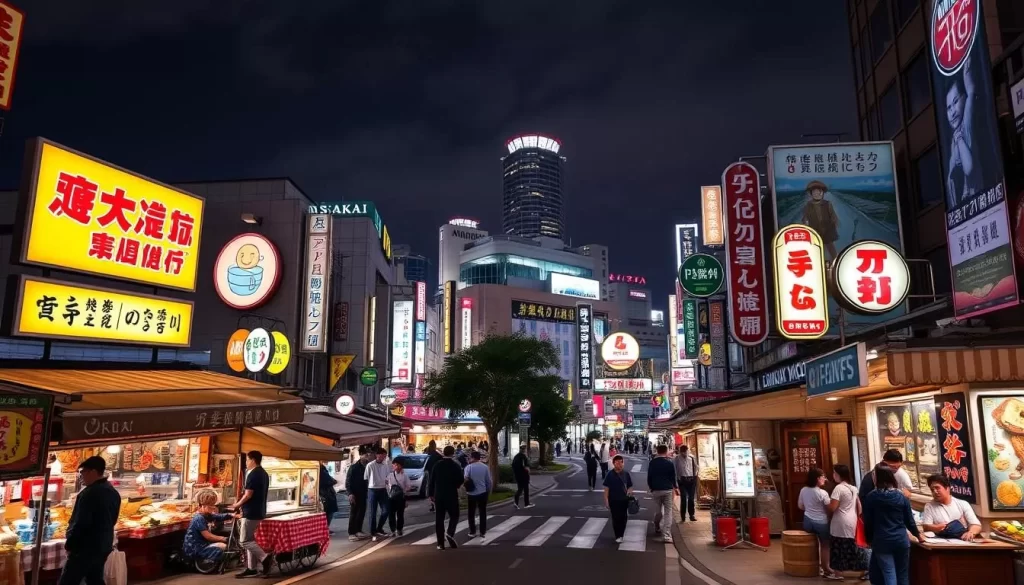
As the culinary capital of Japan, Osaka offers an unforgettable gastronomic experience. The city is famous for its food scene, where you can indulge in a wide variety of delicious dishes, from street food to high-end restaurants.
Dotonbori: Food and Entertainment Paradise
Dotonbori is a must-visit destination in Osaka, known for its neon lights, giant food displays, and lively atmosphere at night. This entertainment district has been a staple of the city since 1662, offering a unique blend of fun and food. You can try local specialties like takoyaki and okonomiyaki, which are sure to tantalize your taste buds.
Osaka Castle and Historical Sites
While enjoying the city’s food, don’t miss the opportunity to visit Osaka Castle, a symbol of the city’s historical significance. The castle offers a glimpse into Japan’s feudal past and provides spectacular views of the modern cityscape from its observation deck.
Hidden Food Streets and Local Favorites
For an authentic experience, explore the streets of Ura-Namba and Tenma, where locals enjoy street food and dine at intimate restaurants. These hidden gems showcase the best of Osaka’s culinary scene, offering a truly immersive experience.
In Osaka, the philosophy of “kuidaore” (eat until you drop) is alive and well, encouraging you to indulge in the city’s incredible variety of food and enjoy the city‘s vibrant atmosphere.
Nara: Beyond the Famous Deer Park
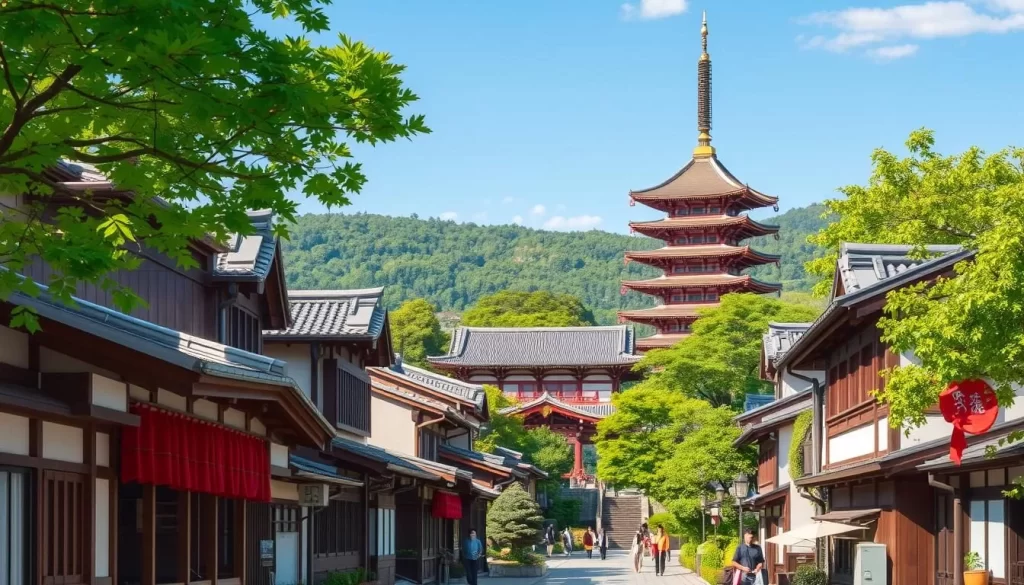
Beyond its famous deer park, Nara is a treasure trove of ancient temples and historical landmarks, making it an ideal destination for a day trip from Kyoto or Osaka. Nara, Japan’s first permanent capital, offers a compact historical area that is rich in cultural and historical significance.
Todai-ji Temple and the Great Buddha
Todai-ji Temple is home to the Great Buddha (Daibutsu), one of Japan’s most impressive cultural treasures. The Great Buddha stands nearly 15 meters tall and is housed in the world’s largest wooden building. Visitors can also find a wooden pillar with a hole the size of the Buddha’s nostril, which, according to legend, ensures a long life if you can pass through it.
Interacting with the Sacred Deer
The sacred deer of Nara Park are considered messengers of the gods in Shinto belief. You can interact with these semi-wild animals as they roam freely around the temple grounds, creating a unique experience. Be prepared to be surrounded by deer eager to snack on senbei (crackers) held out by visitors.
Ancient Pagodas and Historical Structures
Nara’s historical significance is evident in its ancient pagodas, particularly the five-story pagoda at Kofuku-ji, which dates back to the 8th century. The city’s layout allows you to travel through time as you walk from one historical structure to another, with eight UNESCO World Heritage sites concentrated in a relatively small area.
Nara’s compact size makes it easy to explore its many attractions within a day. Whether you’re interested in history, culture, or simply enjoying the serene atmosphere, Nara has something to offer. You can easily spend a time exploring the city’s area and discovering its many hidden gems.
Kobe: Port City with Mountain Views
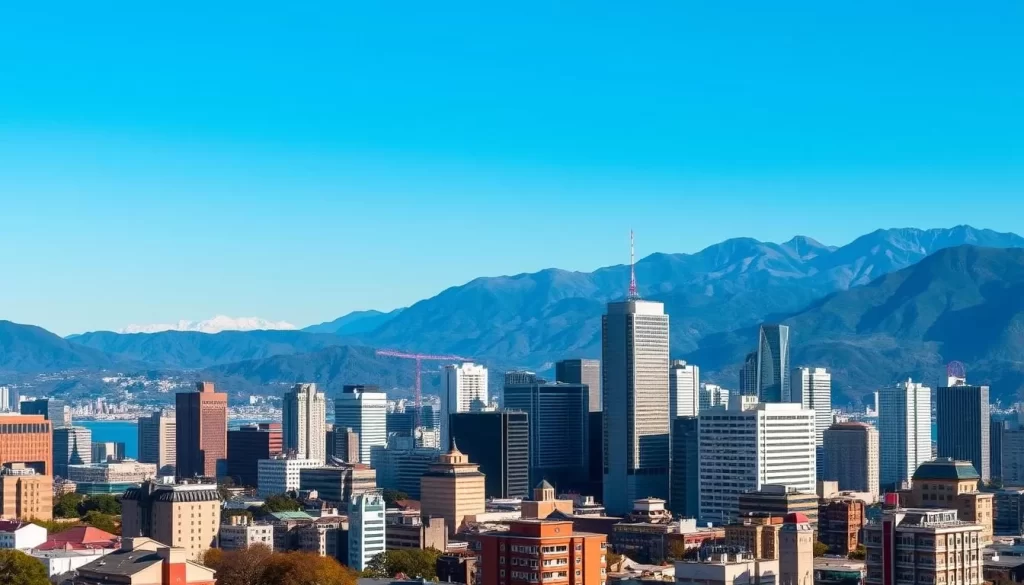
As you explore the Kansai region, you’ll discover Kobe, a city that seamlessly blends international influences with traditional Japanese culture. Kobe’s unique position as a major port city has created a cosmopolitan atmosphere that’s distinct from other Japanese cities.
Nankinmachi (Chinatown) and Harbor Area
Nankinmachi, Kobe’s vibrant Chinatown, presents a multicultural experience with its colorful gates, lantern-lit alleys, and restaurants serving authentic Chinese cuisine alongside Japanese-Chinese fusion dishes. The harbor area transforms at sunset, when the city lights begin to twinkle and reflect off the water, creating one of Japan’s most romantic urban views.
World-Famous Kobe Beef Experience
No visit to Kobe would be complete without experiencing the world-famous Kobe beef, raised according to strict traditions and known for its exceptional marbling, tenderness, and rich flavor that makes it one of the most sought-after food experiences in Japan. Savor this culinary delight at one of the many local restaurants in the area, and indulge in the rich flavors that Kobe has to offer.
Wakayama: Nature’s Playground
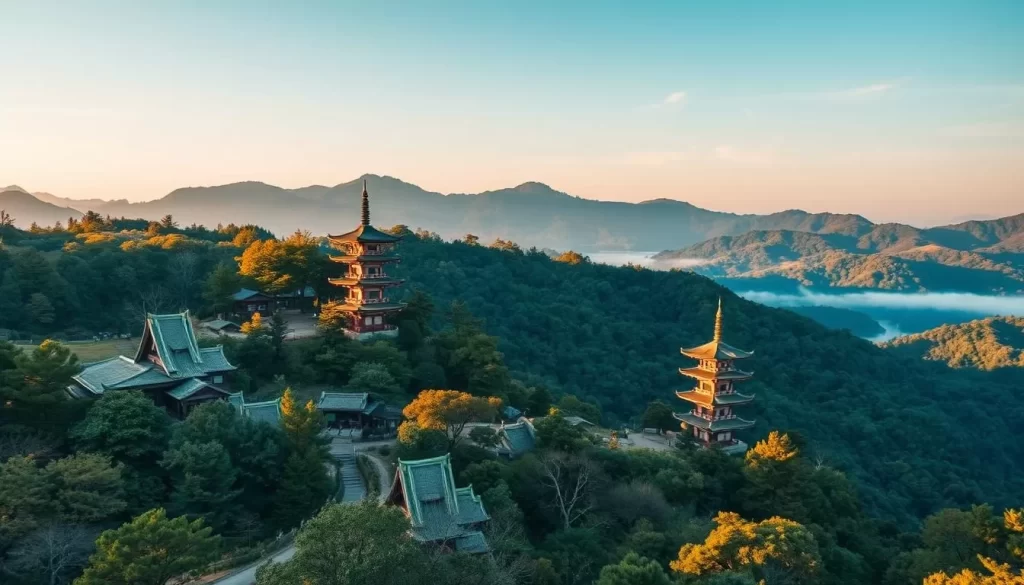
Wakayama, a lesser-visited prefecture in Kansai, Japan, is a treasure trove of spectacular natural landscapes and deeply rooted spiritual traditions. Unlike more touristed areas, Wakayama offers a serene escape where you can immerse yourself in nature and explore sacred sites without the crowds.
The region is home to some of Japan’s most breathtaking natural wonders and spiritual landmarks. One of the must-visit places is Mount Koya, known for its significant role in Shingon Buddhism.
Mount Koya and Temple Stays
Mount Koya, or Koyasan, is the heart of Shingon Buddhism, introduced to Japan in 805 AD by the Buddhist monk Kukai. The mountaintop is home to a secluded temple town that has developed around Kukai’s mausoleum, serving as the start and end point of the Shikoku Pilgrimage. You can experience temple stays, known as “shukubo,” where you participate in morning prayers, meditation sessions, and enjoy traditional vegetarian Buddhist cuisine prepared by monks.
Nachi Falls and Sacred Sites
Another highlight of Wakayama is Nachi Falls, Japan’s tallest single-drop waterfall, standing at 133 meters. The falls create a breathtaking scene beside the vermilion three-story pagoda of Seigantoji Temple, forming one of Japan’s most iconic natural and spiritual places. The nearby Nachi Taisha shrine is also worth visiting, as it is part of a complex of neighboring religious sites featuring both Buddhist and Shinto designs.
As you explore Wakayama, you’ll embark on a journey through misty mountain temples, sacred pilgrimage routes, and breathtaking natural landscapes, making for an unforgettable adventure and a deeply enriching experience.
Kansai Region, Japan: Best Things to Do for Nature Lovers
The Kansai region offers a diverse range of natural landscapes and activities perfect for nature lovers. From Japan’s largest freshwater lake to ancient pilgrimage trails, the area is a haven for outdoor enthusiasts.
Lake Biwa in Shiga Prefecture
Lake Biwa, Japan’s largest freshwater lake, is a must-visit destination for nature lovers. You can enjoy a variety of activities such as cycling along its 235km shoreline, cruising across its waters, or participating in water sports. The surrounding mountains offer breathtaking views, especially during the cherry blossom season. Visitors can also ride the cable car in the surrounding mountain ranges or walk the suspension bridge for panoramic views.
Hiking the Kumano Kodo Trails
The Kumano Kodo trails, a UNESCO World Heritage site, offer hiking options for all levels, from challenging multi-day treks to accessible day trips. These ancient pilgrimage routes connect sacred sites through some of Japan’s most pristine forests, providing a unique spiritual experience. Nature lovers can enjoy spectacular views throughout the seasons, from spring cherry blossoms to autumn foliage.

Cultural Experiences and Traditional Arts
Discover the essence of Japan’s cultural identity in the Kansai region. The area is rich in traditional arts and cultural practices that have been refined over centuries.
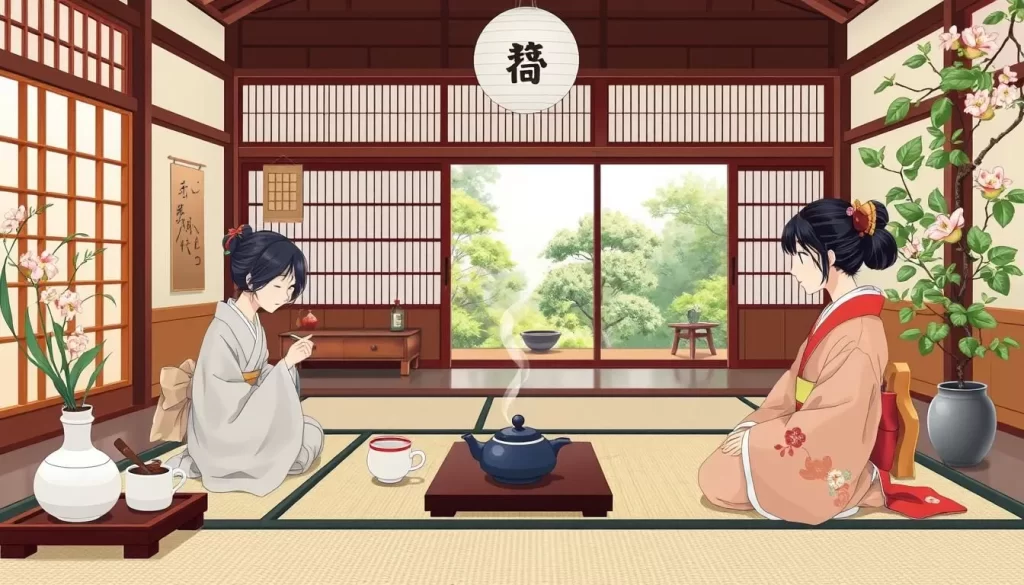
Tea Ceremonies and Zen Gardens
Participate in a tea ceremony, a quintessential Japanese experience, in cities like Kyoto and Uji. These ceremonies embody the spirit of mindfulness and the appreciation of simplicity. Zen gardens, found in temples such as Ryoan-ji and Daitoku-ji, invite contemplation and a connection with nature.
Traditional Puppet Theater on Awaji Island
Awaji Island is home to the traditional puppet theater, known as ningyo joruri, a centuries-old art form. This traditional performance brings historical tales to life, offering a glimpse into Japan’s rich cultural heritage and a different sense of time.
Unforgettable Festivals of Kansai
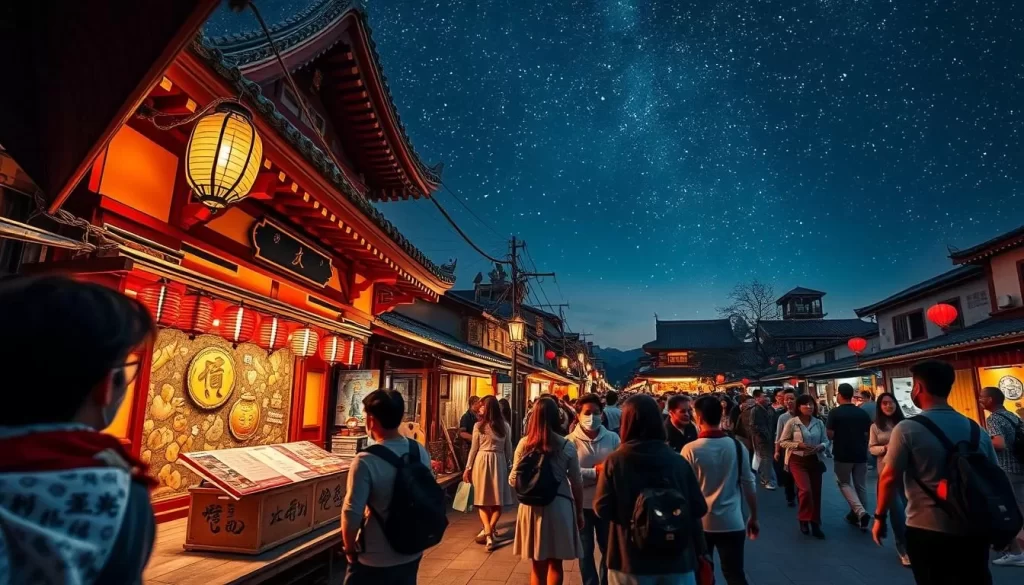
As you explore Kansai, you’ll discover a world of unforgettable festivals that embody the spirit of Japan’s cultural capital. Kansai’s festivals (matsuri) offer some of Japan’s most spectacular cultural celebrations, transforming city streets into vibrant stages for traditions that have continued uninterrupted for centuries.
Gion Matsuri in Kyoto
The Gion Matsuri in Kyoto, dating back to 869 CE, fills the entire month of July with events, culminating in grand processions of enormous wooden floats (yamaboko) weighing up to 12 tons that are pulled through the streets by teams of men in traditional costume. This spectacle is a testament to Kyoto’s rich cultural heritage.
Tenjin Matsuri in Osaka
Osaka’s Tenjin Matsuri creates an unforgettable atmosphere with its dramatic boat processions on the Okawa River, where lantern-lit vessels carry shrine mikoshi (portable shrines) accompanied by traditional music and dancing, culminating in spectacular fireworks displays at night.
Fire Festivals and Local Celebrations
Fire festivals throughout the region offer primal, mesmerizing performances, from Nara’s Wakakusa Yamayaki where an entire mountainside is set ablaze to Kurama’s Fire Festival where men carry massive flaming torches through night streets, making for a truly fun and memorable experience.
Culinary Journey Through Kansai
Your culinary adventure in Kansai starts here, with a mix of street food, refined cuisine, and local specialties. The Kansai region is renowned for its diverse and vibrant food culture, offering a wide range of delicious dishes that reflect its rich history and cultural heritage.

Osaka Street Food: Takoyaki and Okonomiyaki
Osaka’s street food scene is a must-experience, with popular dishes like takoyaki (octopus-filled batter balls) and okonomiyaki (savory pancakes). These affordable and flavorful dishes are enjoyed while exploring the lively food streets.
Kyoto’s Refined Kaiseki Cuisine
Kyoto is famous for its refined food culture, particularly kaiseki-ryori, a traditional multi-course meal that emphasizes seasonal ingredients, meticulous preparation, and artistic presentation. This culinary art form reflects Kyoto’s imperial heritage and offers a sublime dining experience.
Regional Specialties Across Prefectures
Your journey through Kansai should include trying regional specialties such as Kobe beef, Wakayama ramen, and Nara’s kakinoha-zushi. Many restaurants throughout Kansai have perfected these local recipes over generations, providing a taste of tradition with every meal.
Hidden Gems and Local Favorites

Explore the authentic side of Japan in Kansai’s lesser-known spots, where local culture thrives. Beyond the famous tourist attractions, you’ll find unique experiences that showcase the region’s diverse heritage.
Nakazakicho Neighborhood in Osaka
Nakazakicho is a charming residential area near Osaka Station, offering a nostalgic journey back in time. The streets are lined with vintage shops, artisan boutiques, and cozy cafes, making it a personal refuge from Osaka’s bustling energy. This hidden gem is a great place to experience local life in a city that seamlessly blends tradition with modernity.
Uji’s Green Tea Culture
Uji is renowned for its green tea culture, a legacy that spans centuries. You can visit tea plantations, participate in traditional tea ceremonies, and sample matcha-flavored treats in this picturesque district. Uji offers a serene escape from the crowds, allowing you to immerse yourself in Japan’s rich cultural heritage.
Iga Ninja Village in Mie
The Iga region in Mie Prefecture is famous for its ninja heritage. At the Ninja Museum, you can explore reconstructed ninja houses, watch spectacular demonstration shows, and even practice your ninja skills. This unique attraction offers a fascinating glimpse into Japan’s secretive warrior culture, making it a must-visit among the region’s hidden spots.
Shopping Experiences in Kansai
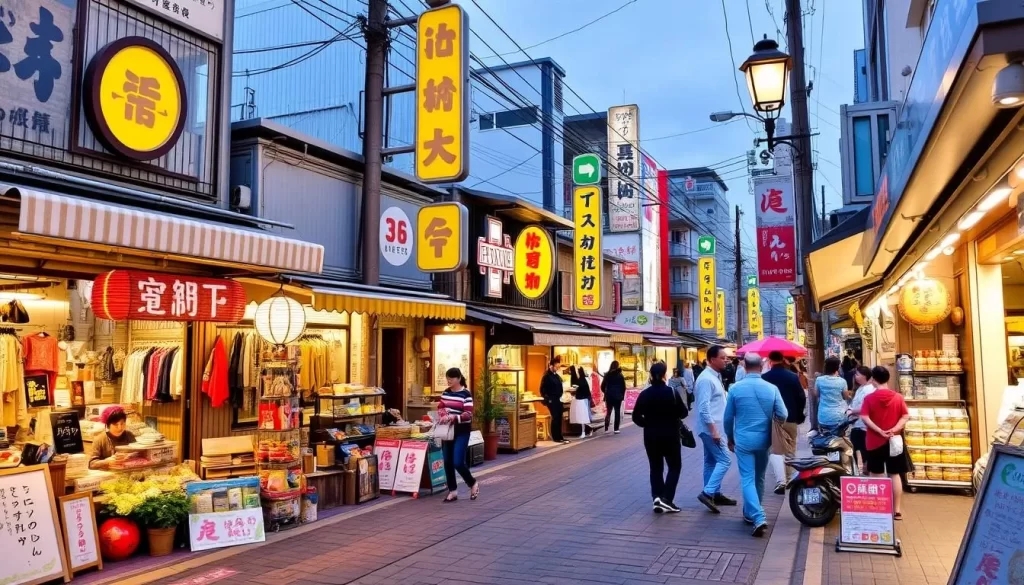
From traditional crafts to cutting-edge fashion, Kansai’s shopping districts are a treasure trove for visitors. The region offers a diverse range of shopping experiences across its cities.
Traditional Crafts and Souvenirs
Kansai is renowned for its traditional crafts, including Kiyomizu pottery and Nishijin textiles. You can find these unique souvenirs in Kyoto’s traditional shopping streets like Teramachi and Nishiki Market. These areas allow you to purchase authentic Japanese crafts directly from skilled artisans.
Modern Shopping Districts and Unique Finds
Osaka’s shopping districts, such as Shinsaibashi and Amerika-mura, offer a blend of luxury brands and quirky fashion. Hidden gems like Orange Street (Tachibana Dori) in Minami Horie provide unique shopping experiences, featuring everything from vintage gems to stylish homewares. You can also explore Doguyasuji Arcade in Namba for specialized kitchenware.
Practical Travel Tips for Exploring Kansai

Kansai, a region rich in history and culture, requires some strategic planning to navigate efficiently. With its excellent train networks, you can explore multiple cities on your trip.
Getting Around with the Kansai Pass
The Kansai Thru Pass offers excellent value for travelers, providing unlimited travel on non-JR trains and buses throughout the region. This makes it easy to visit Kyoto, Osaka, Nara, Kobe, and smaller towns without purchasing individual tickets.
Best Times to Visit Different Attractions
Timing your visit can dramatically impact your experience. Early morning (before 9 am) and evening hours (after 5 pm) at major temples and shrines allow you to avoid crowds. During cherry blossom season (late March to early April), it’s essential to book accommodations in advance to make the most of your time.
For a smooth travel experience, consider staying in one central location like Kyoto or Osaka and taking day trips. The compact nature of the region and excellent transportation make this a convenient approach to exploring Kansai.
Suggested Itineraries for Different Trip Lengths
Whether you’re embarking on a short 3-day trip or a leisurely 7-day exploration, Kansai has something to offer for every kind of traveler. The region’s diverse attractions can be experienced in various ways, depending on your travel preferences and the time you have available.
3-Day Essential Kansai Experience
For a 3-day trip, focus on the “golden triangle” of Kyoto, Osaka, and Nara. Spend your first day exploring Kyoto’s temples and shrines, followed by Osaka’s vibrant food scene and modern attractions on the second day. On your third day, visit Nara’s historical treasures.
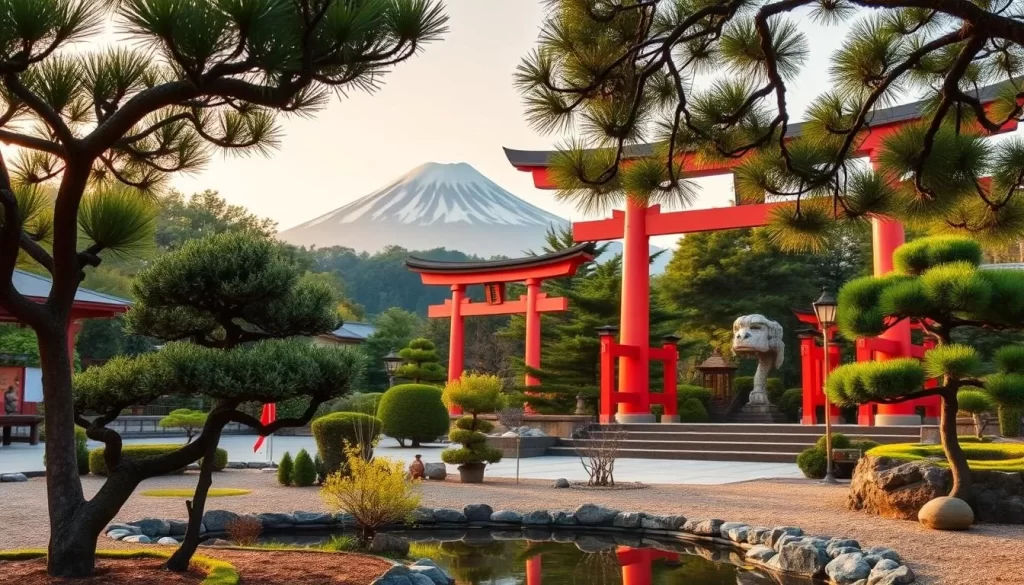
7-Day In-Depth Exploration
A 7-day trip allows you to delve deeper into Kansai’s hidden gems. After covering the “golden triangle,” you can visit Mount Koya for a temple stay, enjoy Kobe’s international atmosphere and famous beef, or take day trips to Uji, Arashiyama, or Himeji Castle. This guide provides a flexible framework to customize your trip based on your interests.
Conclusion: The Timeless Appeal of Kansai
The Kansai region is a timeless treasure where tradition meets innovation. You’ll experience diverse attractions, from serene temples to vibrant food streets, making it a fun and unforgettable journey. Kansai becomes a second home for many travelers.
The above is subject to change.
Check back often to TRAVEL.COM for the latest travel tips and deals.






